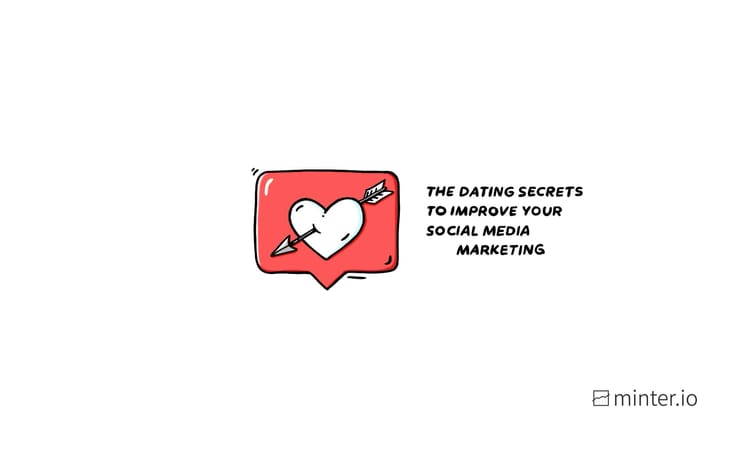The ultimate guide for branding your business on social media

Branding is all about being recognisable. When you post a piece of content, how does your audience know it’s from you? In this article, we’ll be putting the pieces together to help you develop business branding on social media that gets you noticed and known by your target audience.
Branding on social media
Everything someone sees, reads and feels when they encounter content online moulds how they perceive the business it’s produced by. The aim of branding online is to make sure that a positive perception lines up with the audience you’re trying to attract.
Visual branding
When you look at a social profile, the visual branding is the first thing you’re greeted by. That’s why nailing the visual elements of your branding is crucial for grabbing attention.
Profile picture
An obvious part of branding on social media is the choice of profile picture. Many companies opt for their business logo (or a variation of it) or the face of the brand. This could be the business owner, the star product or even fictional characters related to the brand. Make it obvious, clear and professional. It’s important to remember that your profile picture won’t just show up on your profile page. It is the image that accompanies all content and comments made by the profile, solidifying it as a key component to branding online.



Banner
On Twitter and Facebook you’ll also consider adding a banner to your profile. There are many ways you can use this space, from advertising your current brand focus to hammering home your brand ethos. Whatever media you choose to host here, make sure it aligns with how you want your business to be seen. As it will accompany your profile picture on top of your feed, you can afford to branch out from using the same visuals and instead choose media that compliments it.

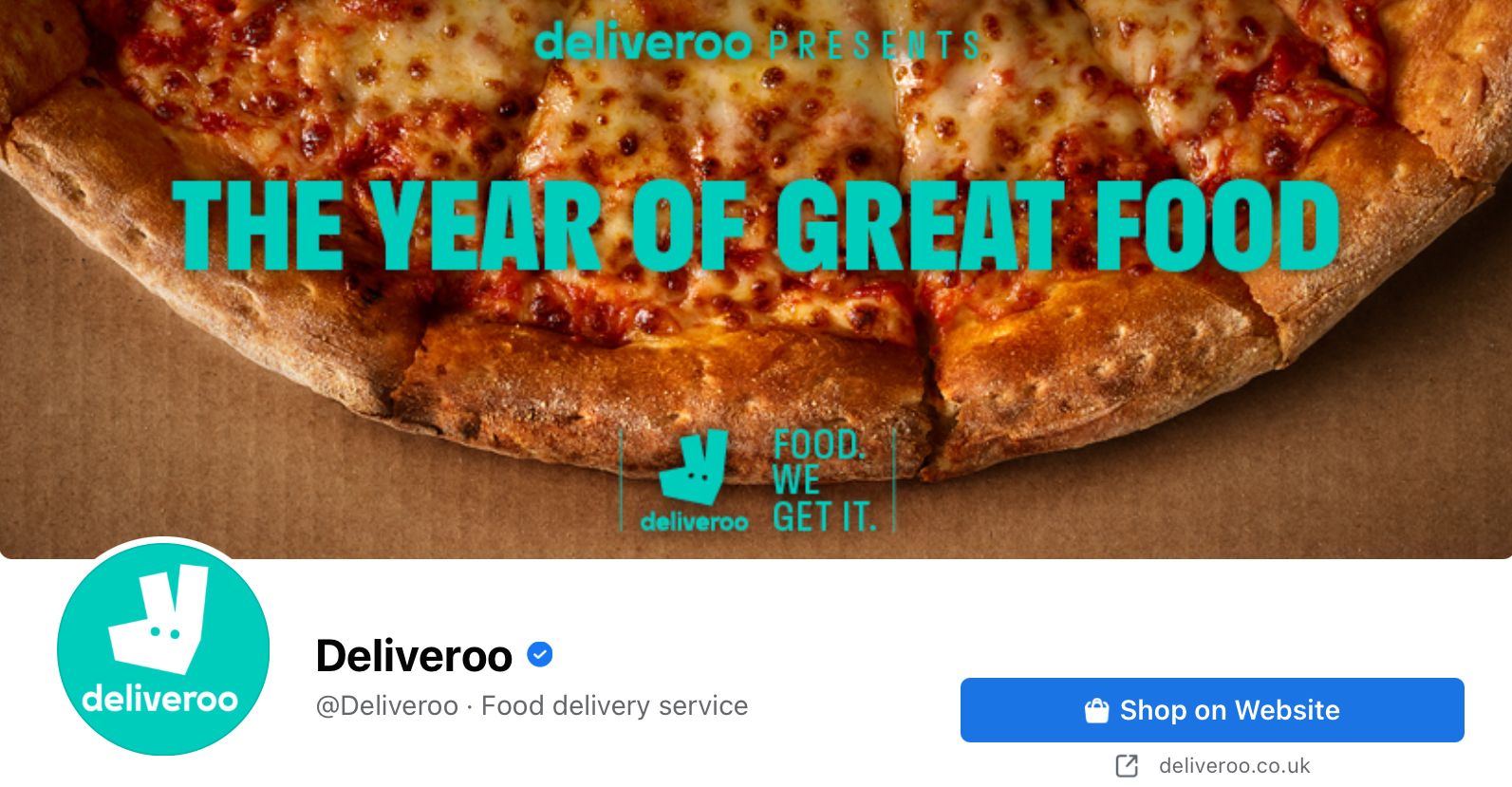
Aesthetics
Some key visual elements will tie in your branding across all your content. This includes your colour palette, fonts and typography, media colour grading and filters. Think about the tone and feel you want to convey with these elements and whether they align with the target audience you’re looking to attract. Once you have a clear idea of how you want your business visuals to look, make sure your whole social media team is on the same page by outlining visual branding guidelines. This will make content creation a smoother process and ensures that you'll retain consistent visuals on all your social media platforms.

Ask yourself:
- Can people identify the kind of business I have straight away?
- Are any words on these visuals clear and easy to read?
- Would my visuals appeal to my target audience?
- How do the visuals make me feel when I look at them?
Profile branding
There are elements of your social profile set-up that aren’t image based. That doesn’t mean they aren’t part of your branding. While sometimes overlooked, these elements can work for or against you and your business.
Brand name
Your business name is a big part of your branding. Choose a name that reflects your business. It should be easy to remember, simple to spell and unique enough that you can stand out while not being muddled up with another company. This will help potential customers connect and communicate with you effectively.
Social handles
Choosing a social handle that lines up with your brand name makes it easy for fans to find and follow you. It also makes your business come across in a professional manner. Wherever possible, use the same social handle across different social platforms.



Ask yourself:
- Are these elements helpful to the audience?
- Are they consistent across multiple social platforms?
- What do they say about my business?
- Do they appeal to my target audience?
- How can I optimise them to better suit my business needs?
Branding copy
With every piece of content uploaded to the internet there is an opportunity to couple that content with text. This is an ideal space to provide context to your content, but also to share more about who you are and what you stand for.
Brand voice
Brand voice and tone of voice, although similar, are not the same thing. Think of your brand voice as the core principles, values, ethics and goals of your business. These shouldn’t change no matter who you’re trying to connect with on social media. Some businesses outline the principles and objectives of their business in a manifesto. It’s worth taking the time to figure out exactly what you’re trying to achieve and how you aim to achieve it, as this will spearhead your branding with precision and focus.
Tone of voice
Your brand tone of voice is how you choose to portray these goals to an audience. You might speak differently to a teenager than you would a grandmother. Your tone of voice may change in different surroundings too, for example you might speak differently from a social setting to a professional one. The brand tone of voice is like this, it adapts to the audience and environment it’s in.
Your copy might differ from platform to platform and there’s a balance to be struck between your company vibe and the culture on each platform. Remember, different age groups tend to congregate on different apps and people go to different apps for different things. For instance, it’s more likely you’ll look for information on Facebook and entertainment on TikTok. Look for ways you can maintain your brand voice, while adapting your tone to suit the demographics you’re appealing to on each platform you choose to be on.
Notice how @nikonusa shares the same image on Instagram and Twitter but changes the copy for each platform. The Instagram post includes an emoji, hashtags, a longer quote and finishes with the camera information. On Twitter, the camera information is closer to the beginning of the text, there's no emojis or hashtags to be found and even with a chain of tweets, the selected details are more succinct.
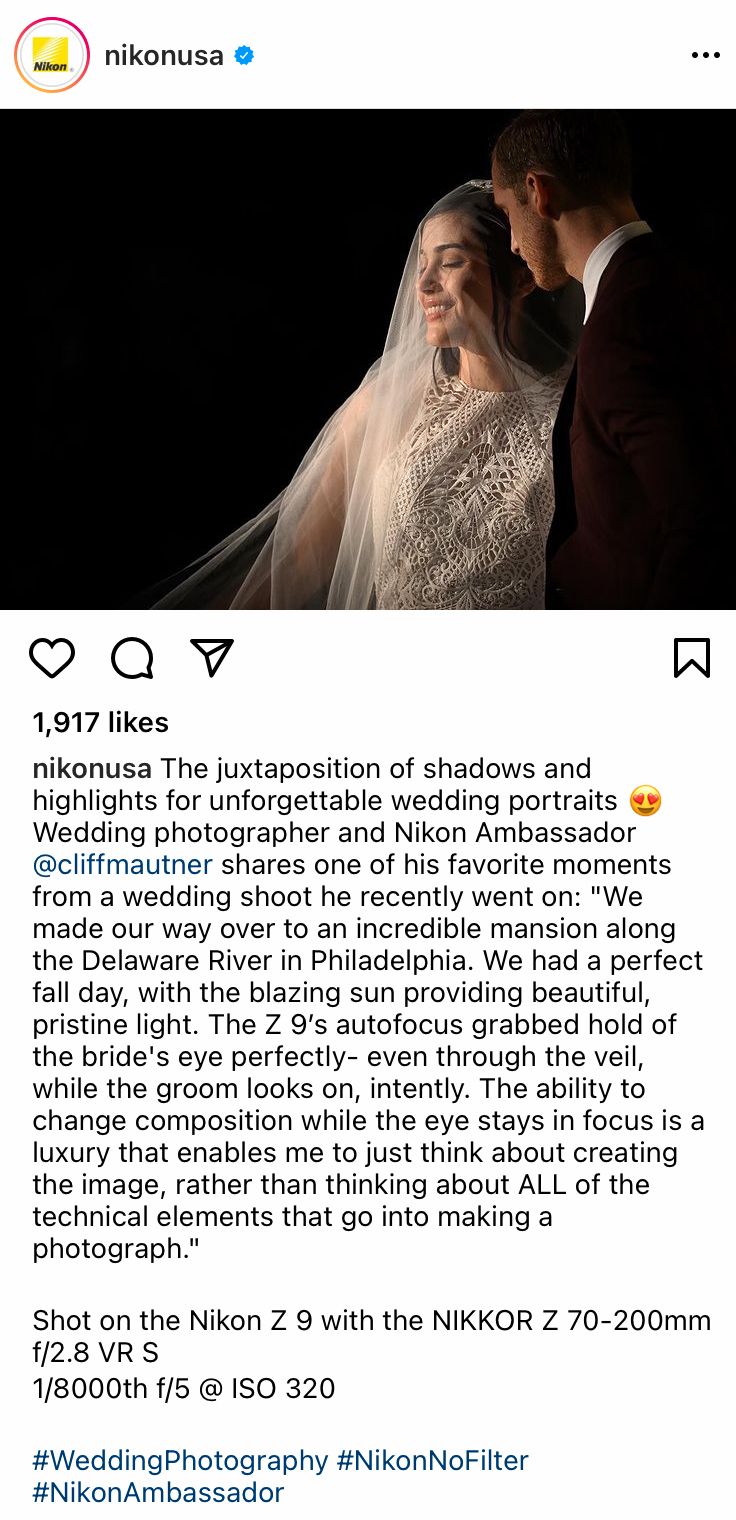
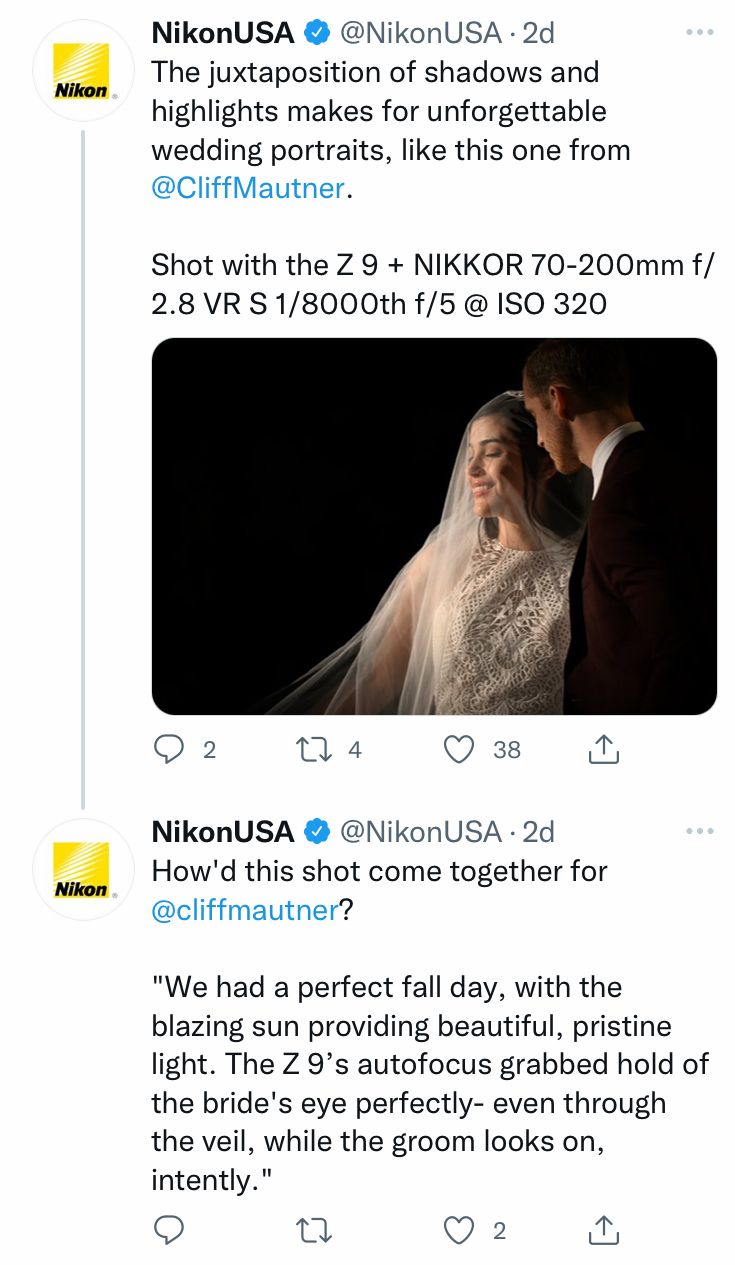
Ask yourself:
- What does my company stand for?
- What are the ethics and morals my business supports?
- Is there anything my business is passionate about?
- How do I want my company to come across online?
- How can I convey the things that are important to my business to an audience?
- How can I adapt my approach for the differing demographics on each social profile I use?
Branding content
When it comes to the content you share, there is a plethora of choice at your fingertips. There’s no reason why this shouldn’t be thought through from a branding perspective.
Types of content
Depending on the type of business you have and what you want your business to be known for, you may opt to share particular types of content such as videos, photos, written word or audio. This may influence the social platforms you lean into more heavily. You could wrap up your ideas in different packaging for different platforms of course, but staying true to your core goals and how you want to be seen by viewers is essential for great branding. Choosing the types of content that best align with this might help along the way.
For example, it makes sense for a book store like Barnes & Noble to dabble in written word, while Disney is more likely to lean heavily into video content.
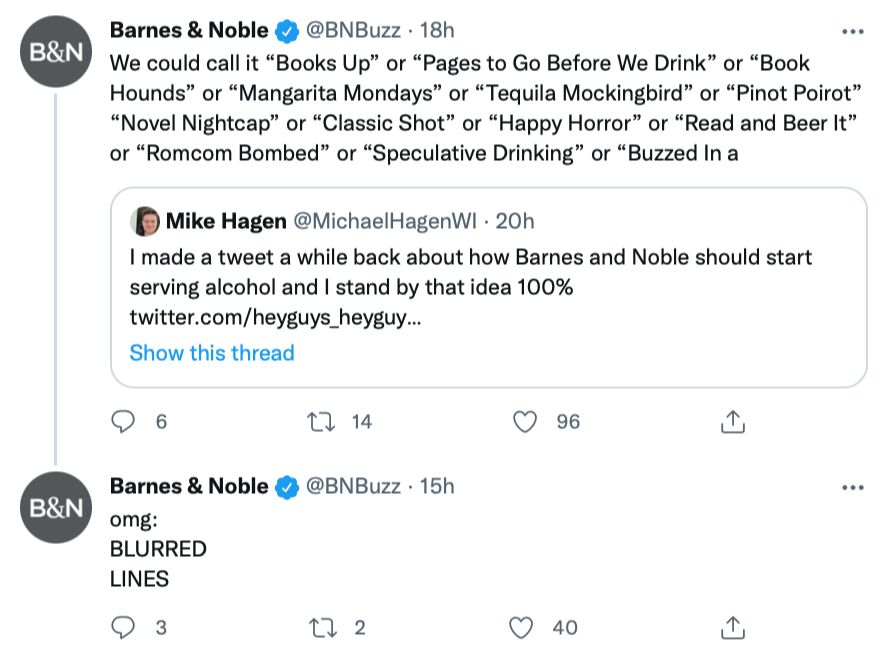
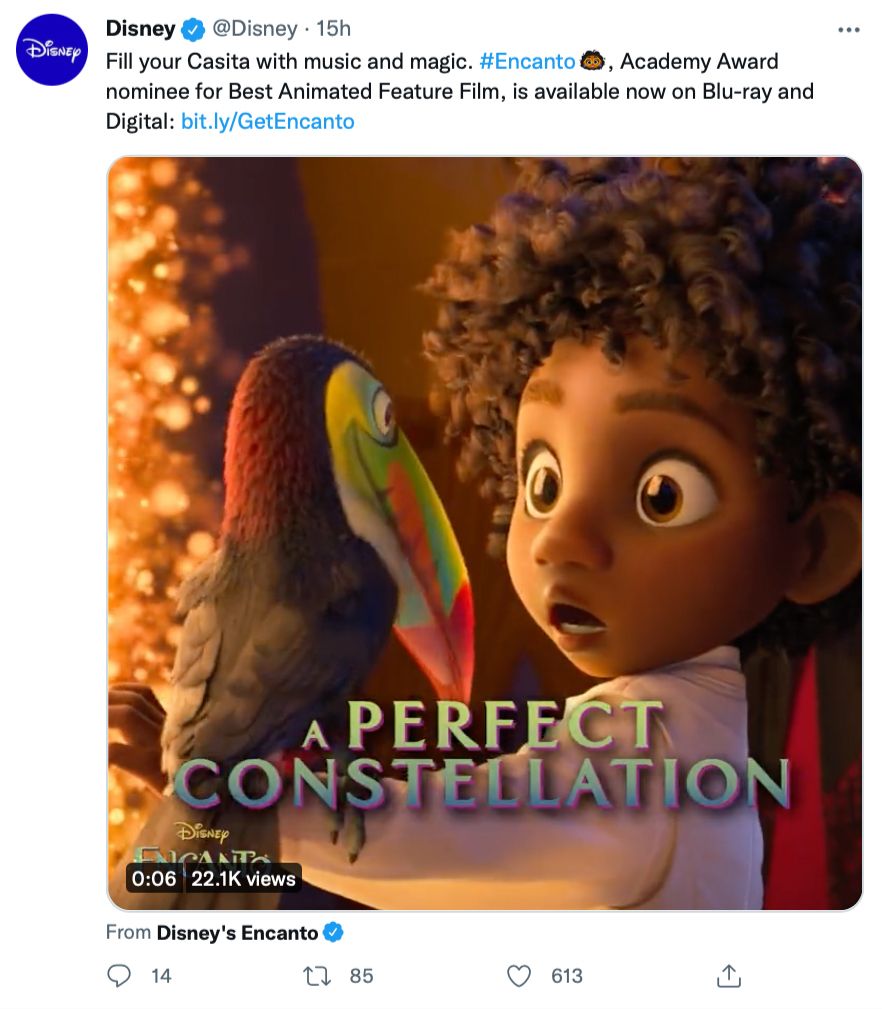
Content of content
When crafting content, branding should be at the heart of how it’s presented. Think back to your visual branding. The colours, fonts, filters and feelings you want to spark should shape your content creation. You may want to include your logo as an overlay or at the end of video content. Adding a company logo to videos is something @Prada does regularly on TikTok.



The importance of branding
Rule of 7
The marketing rule of 7 states that it takes someone an average of seeing your brand 7 times before taking action. If your branding is inconsistent, the viewer may not be able to recognise that your content is coming from the same place. Strong branding is a key component for building brand awareness effectively. Building trust starts with people recognising your business and knowing exactly what they can expect from your business.
Increase followers and avoid unfollows
The right audience for your brand is more likely to follow your profile if they like the content you create and know you will consistently deliver that content. It’s important that when someone comes across your socials that they knows what to expect from your brand. Having consistent branding, including similar elements such as the colours, fonts and copy, makes your brand instantly recognisable to the people who want to enjoy your content. Deviating too far from this will break that familiarity you have with your audience, whereas reinforcing those branding ideas strengthens familiarity and trust.
Branding can make a huge difference to your presence on social media and the success of your business goals. Find out just how big an impact it has by implementing these branding tips and tracking your metrics with Minter.io - the social media analytics tool dedicated to helping your business thrive.
Try Minter.io!→


